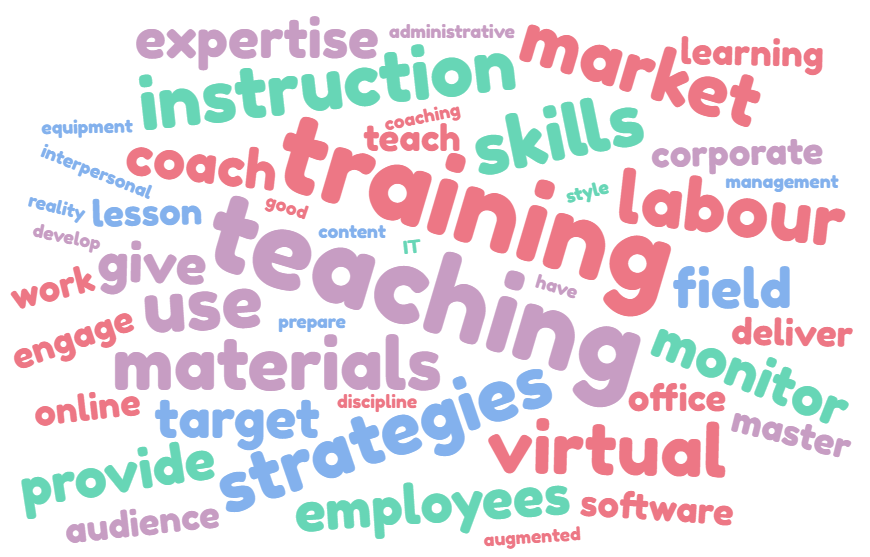Corporate trainer
|
| |
| Name in other languages (French, German) |
| FR: Formateur /formatrice en entreprise, Formateur d'adultes, Moniteur d'entreprise DE: Betrieblicher Ausbilder/in EL: εταιρικός εκπαιδευτής/εταιρική εκπαιδεύτρια |
| Sectors that are recruiting |
| Carrier |
| Type of mobility |
| Vertical |
| Job purpose |
| To meet the demands of companies, corporate trainers will develop training courses with varied objectives: anticipating needs, updating and developing skills of employees for a job evolution or to remain employable. NB: in some countries, the start-up level of learning can influence the job title "trainer", "instructor"... |
| Main activities |
| Identifying the objectives required, drawing up a list of the knowledge and skills to be imparted, developing methods and design training materials, supervising and leading a group of trainees (whether in a training room or at a distance through e-learning), assessing the trainees' achievements |
| Future possible career development |
| Specialising in a subject, Training manager, Consultant, Technical sales representative |
| |
| Percentages of compatibility |
| |
| • Percentage of compatibility regarding transversal work situation - compared to a lorry driver |
|
|
| • Percentage of compatibility regarding technical skills, competences & knowledge - compared to a lorry driver |
|
|
| • Percentage of compatibility regarding transversal work situation - compared to a coach driver |
|
|
| • Percentage of compatibility regarding technical skills, competences & knowledge - compared to a coach driver |
|
|
| |
| Level of competencies expected for a level IV automation |
| |
| • EQF level of certification needed |
| Level 5 |
| • Other prerequisites (if applicable) |
| Possibility to train as a trainer to be more efficient at work, knowledge of the subjects being taught is often required |
| |
| Transversal work situation scoring |
| |
| • Use of computer tools |
|
|
| • Reading or writing documents |
|
|
| •Communicating |
|
|
| • Working in a team |
|
|
| • Management, supervision |
|
|
| • Work rhythm |
|
|
| • Autonomy in procedures |
|
|
| • Repetitive dimension of work |
|
|
| • Working under pressure |
|
|
| • Emotional load |
|
|
| |
| Technical competencies, skills and knowledge |
| |
 |
| |
| Work environment |
| |
| • Organisational context |
| Depending on the size of the company, corporate trainers may also be required to go on rounds; in a TRM company that is involved in the transport of dangerous goods, they may also be a safety advisor |
| • Business contacts |
| Human resources manager, Managing director |
| • Pace of work |
| Regular shifts |
| • Reporting line |
| Managing director, HR director |
| • Business travel |
| Weekly |

